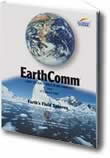Below are storylines that were designed by Cheryl Mosier, an Earth Science Teacher at Columbine High School in Littleton, Colorado.
Big Idea:
- Fluid spheres within the Earth system include the hydrosphere, atmosphere, and cryosphere, which interacts and flow to produce ever-changing weather, climate, glaciers, seascapes, and water resources. These affect human communities, shape the land, transfer Earth materials and energy, and change surface environments and ecosystems.
- Natural hazards associated with Earth processes and events include drought, floods, storms, volcanic activity, earthquakes and climate change. They pose risks to humans, their property and communities. Earth science is used to study, predict, and mitigate natural hazards so that we can assess risks, plan wisely, and acclimate to the effects of natural hazards.
|
|
Activity 1 – Ice is an Unusual Material |
Activity 2 – How Glaciers Respond to Changes in Climate |
Activity 3 – How do Glaciers Affect Sea Level? |
Activity 4 – How Rising and Falling Sea Levels Modify the Landscape |
Activity 5 – How Glaciers Modify the Landscape |
Activity 6 – Catastrophic Floods from Glacial Lakes |
Activity 7 – Nonglacial Ice on the Earth’s Surface |
|
Key Evidence Learned |
- graph a heating curve for ice - compare densities of ice and water - hydrogen bonds explain some of the unique properties of water |
- mathematical model of a glacier - how would the glacier respond to changes in climate |
- estimate, with maps, how much ice was in the Pleistocene and the sea level at the time - estimate volume of ice in Greenland and Antarctica and calculate how much sea level would rise - determine how sea level changes would impact CO |
- model sea-level changes - describe features of a coastline during high sea level and low sea level |
- erosion and deposition of glaciers |
- effects of ice-dam failure and catastrophic flooding - how catastrophic floods alter the landscape - some geologic processes are fast |
- stability of structures on permafrost - problems of permafrost of humans - positive feedback loop between sea ice and climate |
| Connection to: |
- how pressure affects ice - how pressure affects snow |
- mechanics of how glaciers form and move |
- mechanics of post-glacial melting and it’s impact on sea level |
- how has sea level changes impacted human history |
- movement of glaciers can change stream drainage patterns - CO landforms related to glaciers |
- impact on CO from catastrophic floods in the past/future |
- implications of sea ice, icebergs and frost in the Earth system |
|
Big Idea |
- understanding of how the cryosphere is created |
- understanding of the cryosphere - how the cryosphere is affected by climate |
- relationship between cryosphere and hydrosphere |
- sea level changes and their impact on other spheres |
- how glaciers modify the geosphere |
- changes in geosphere due to the cryosphere |
- interactions between the cryosphere and hydrosphere and atmosphere |
|
Real Life and Chapter Challenge |
- understanding of ice and how it forms |
- how glaciers form and react to changes in climate - how glaciers move |
- how sea level changes would impact CO - global warming |
- human history and sea level changes - CO sea level changes |
- CO landscapes related to glaciers |
- local impacts from catastrophic floods |
- local changes due to melting permafrost - where permafrost is in CO |
|
Geosphere |
- how ice forms from snow |
- movement of glaciers |
- changes along coastlines during high/low sea levels |
- erosion and deposition from glaciers |
- changes to the landscape due to catastrophic floods |
- permafrost locations and how the ground changes during the year |
|
|
Hydrosphere |
- how ice forms from snow |
- sea level changes due to ice volumes |
- sea level changes |
- how stream patterns change |
- stream pattern changes - flooding impacts |
- changes in sea ice |
|
|
Atmosphere |
- how ice forms from snow |
- amount of water in the air due to melting glaciers |
- changes in climate due to sea ice changes |
||||
|
Cryosphere |
- how ice forms from snow |
- how glaciers respond to climate changes - how glaciers form and move |
- volume of ice - how ice melts |
- erosion and deposition of glaciers |
- catastrophic floods and their cause |
- changes in sea ice and icebergs and their impact on humans and other spheres |
|
|
Biosphere |
- impact on humans when/if sea level rises |
- human history and sea level changes |
- recreation locations |
- human impact from catastrophic floods |
- how changes in sea ice impacts humans |
||
|
State Stand. |
4.3a, 4.3b |
4.1.c |
4.1.c, 4.3.c, 4.3.d |
4.1.c |
4.1.c |
||
|
Jeffco Stand. |
4.3a, 4.3b |
4.1.c, 4.1.d, 4.2.e |
4.1.c, 4.2.e, 4.3.c |
4.1.d |
4.1.d |
4.1.d |
4.2.e |
|
CSAP Frame |
4.3.3.a, 4.3.3.b |
4.1.3.c |
4.1.3.c |
||||
|
Jeffco PE |
G 2b, 2c |
G 2b, 2c |
- impact on CO from catastrophic floods in the past/future

